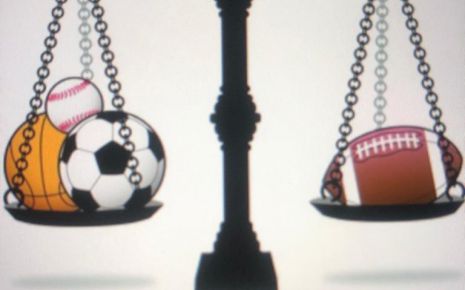Dowry Related To Domestic Violence
Dowry related viciousness is a difficult issue that influences the existences
of ladies and young ladies. Share incorporates gifts, cash, merchandise, or
property given from the lady's family to the lucky man or parents in law
previously, during or any time after the marriage. The rate that a family pays
in share can convey huge emblematic weight where the "more noteworthy the
settlement results, better the status in the family."[1]
In any case, while giving an enormous endowment might go about as a superficial
point of interest, it fundamentally serves to commodify ladies, likening their
value as a person to the worth of the share. The worth of the share is
frequently connected not exclusively to the family's economic wellbeing, yet
additionally to a lady's actual looks and instruction. Successfully, endowment
dehumanizes ladies by regarding them as property.
When the guy or his family searches for further items or continued payments
while the family of the lady of the hour is unable or unwilling to pay,
dowager-related violence usually breaks out. Any "demonstration of brutality or
browbeating linked with the providing or receiving of dowry any time prior to,
throughout, or after the marriage" is defined by the U.N. Division for the
Progression of Ladies as dowry-related violence or harassment.
While endowment is practised around the globe, in South Asia, namely in the
nations of India, Pakistan, Sri Lanka, and Bangladesh, endowment-related cruelty
is most prevalent. Actual savagery, conjugal assault, corrosive assaults, and
spouse devouring are the most well-known forms of inheritance-related brutality
(where a lady is canvassed in lamp fuel or some other catalyst and purposely set
ablaze). Additionally, criminals may use a variety of blackmailing techniques,
such as malnutrition, uncomfortable clothing, deportation, and phoney detention.
They regularly devour or murder people for failing to meet dowry demands via
violence disguising as suicides or accidents, such as fires caused by lamp or
oven fuel. Similar services are often needed by victims of dowry-related
violence and victims of domestic abuse. These women need help getting to
shelters, emergency services, support groups, health treatment, and legal
counsel.
Introduction
An ancient Sanskrit saying reads:
"Where the women are held in homage, there do the celestial spirits reside." In
our country, women's rights are not just safeguarded. The number of instances
listed under the banner of misconduct against women in 2015 is 32,7394. At the
moment, males often regard and stick to women as sex objects.
Dowry is a social infection that only affects other animals if they are
susceptible. Indian women have been placed in vulnerable positions at various
stages of their lives due to religion, tradition, historical prejudice, and
other factors. Level of violence against women is a replication of the force
relationship between men and women. The man-centric worldview is prevalent in a
culture that values men's dominance over women.
The uniqueness of violence against women starts within the first stages and
continues for as long as they can recall. Prenatal decision-making, child
murder, and male youngster desire are all clearly practised. They encounter
complete rejection from societal norms in their education, direction,
decision-making, and other areas.
They already had thoughts about how inferior men are to women and how inferior
women are to men. The increased number of assaults, attacks, corrosive assaults,
workplace abuse, endowment-related brutality, and other crimes against women
demonstrates that the state does not guarantee their safety. The practise of
child marriage, societal control over education, opportunities for growth, and
other factors are what prevent women's imaginations from taking flight.
The significant aspect that women may be subjected to violence once throughout
their lifetime or often throughout their lives at different times In a nation
like India, the constitution outright forbids treating men and women differently
depending on their state of residence, yet it nevertheless occurs.
However, the constitutional guarantee of equality is like to a "diamond for a
beggar." Women have been socially, physically, emotionally, economically, and
sexually exploited in India's historically male-dominated culture from the dawn
of time, sometimes in the name of religion, sometimes under the guise of writing
in the scriptures, and sometimes as a result of societal pressure.
The most extreme kind of abuse a woman might experience at the hands of family
members is known as domestic violence, which is defined as "a pattern of conduct
or abuse by a person or other members against a person who is intimate to
him/her." In India and other affluent nations, there hasn't been a systematic
lack of large-scale and small-scale domestic violence research. It may have an
impact on males, women, or even children. A wife or female companion is
essentially becoming a victim of such violence. With the exception of a few,
women were the victims in almost every instance, albeit the reason isn't always
clear.
The negative effects of abuse at household affect women at every tier of
society. As contrast to seeing or observing parents abusing one another or
manhandling without assistance, the uniqueness of violence against women inside
the family in India is a case that affects how they behave and makes it more
complicated, crucial, and deeply ingrained. The many forms of violence against
women include female foeticide, child murder, sexual abuse, intermarriage,
attack, improper conduct, conjugal assault, and so forth. The recent increase in
crimes against women is troubling and undermines the idea that the nation is
becoming better.
Dowry Related Domestic Violence
Domestic Violence:
Domestic violence at home, sometimes known as personal accomplice brutality, may affect people of all ages and takes numerous forms, including physical, severe, and verbal abuse. Abuse at home has a tendency to return, and its security might change dramatically.According to the Unified Countries, Announcement definition, "aggressive behaviour at home is physical, sexual, and mental brutality happening in the family, including battering, sexual abuse of female children in the family, share-related brutality, conjugal assault, female genital mutilation, and other practises hurtful to women, non-spousal brutality and brutality connected with abuse." Abusive conduct at home is a common occurrence in society at large. Every socioeconomic class, ethnic group, society, and religion is affected.
The great majority are unaware of how common it is since there are constant casualties. In the US, between 3 million and 4 million adult women are mistreated annually by a close friend. In the course of her life, about one out of every four women will likely be mistreated by a companion. It is information on domestic violence that was obtained from a US affiliate. Abuse at home cases have been brought before juries under the 2005 aggressive behaviour at home demonstration. It is created to protect women from domestic abuse.
Dowry Related Violence:
Dowry is a long-standing tradition that has endured over the years. Dowry is still common and required in many parts of the world before accepting an engagement proposal. Payment is often made as part of a pre-marriage agreement and includes gifts of money, accoutrements, or parental property from the lady of the hour's family to the happy man or his parents.
It may be granted before, during, or at any point after marriage. It is considered as an interest, and sometimes the deferral of receiving it leads to particular problems in the family, which in turn lead to abusive conduct at home. The mindset of Indian culture regarding women is the foundation of the homegrown system. The main reason for this is that Indian women actually lack a sense of self-will, and people still regard them with pity and refuse to give them the same status as men.
The most common forms of inheritance-related cruelty are beating, conjugal assault, corrosive throwing, spouse eating, and other forms of cruelty. As other forms of coercion, the offenders may resort to hunger tactics, humiliating clothing, expulsions, and deceptive detention. They regularly utilise violence disguising it as accidents or suicides. Abuse at home is fundamentally a component of the brutality and conceptual frameworks associated with dowry demands.
There are certain behaviours that are recalled for stealing or other crimes that resemble hostile conduct at home. One of the most prominent Examples of dowry-related violations was the Dowry Prohibition Act of 1961.
It signalled the beginning of a new legal framework of settlement provocation restrictions that outright prohibited the demanding and compromise of share. Giving settlement is against the law, although it is nonetheless common in many areas of the nation. After the introduction of insurance for women against domestic abuse in 2005, it offered an additional measure of protection against settlement provocation.
The women must fight and suffer a lot in order to obtain victory for the situation, and they must defend themselves in court, taking into account the dowry-related hostile conduct at home while the case is being heard in court. In any event, dowry-related violence differs from domestic abuse in that the husband or current partner may not be the primary perpetrator of share-related viciousness or death.
According to the law, current or former life partners may also engage in violent acts relating to settlements. Additionally, they may use violence disguising itself as self-destruction or an accident that might be taken or created. The earlier social reformers in the nineteenth and middle of the twentieth centuries worked tirelessly to abolish the unfair distribution of wealth.
Behind that, there lies an important reality:
"The dowry system is mostly responsible for child marriage and victimising young women. A little amount of dowry will enough if a young woman marries early, but if she is educated and competent, she will desire an equal amount of settlement to find a spouse of the same rank ". Today, dowry deaths occur on a regular basis.
When a woman passes away due to an illness or severe injury, or when it occurs naturally after about seven years of marriage and it is further established that she was subjected to cruelty or persistent nagging from her spouse or other family members regarding any desire for dowry, the passing is referred to as a "dowry death" or "share demise." Additionally, a woman of the hour was subjected to human medications if she delayed delivering the share or refused to comply with their requirements during the hour of marriage.
It should be noted that dowry deaths are one of the common issues in our society since dowry-related violence has been seen as a global phenomenon that transcends all borders and is continuously rising in India. Currently, there are laws in India that prohibit dowries, dowry deaths, and the violence that goes along with them, yet some higher authorities either disregard these rules or seldom enforce them. Laws prohibiting dowry were approved in 1961, but they did not take effect. They were later revised in 1984 and 1986 to make it a criminal offence.
When taking into account NCRB's factual data on dowry problems from the year 2004 up to the prolonged period of 2014, the data reveals an increase in the frequency of dowry deaths occurring in our general population. According to NCRB assessments, the most egregiously bad record for crimes against women or stock losses should be evident between the years 2011 and 2014. When compared to the subsequent years, the rate was not much higher when looking at the previous lengthy periods of 2004 and 2005. According to some estimates, one woman dies from this cause per hour.
This explanation has been linked to an increase in such occurrences between the years 2007 and 2014, which is consistent with the data in the table above. According to verified data, 8,455 dowry fatalities from various states were recorded during the course of 2014 as a whole. It is 7,026 when compared to this rate throughout the whole year of 2004.
Additionally, by doing this, it is extremely likely that the growth in the rate of share passing will be made evident. In other words, when comparing the two years, the death rate has increased by 20.33%. When comparing the prolonged period of 2013 to other years, we can see a 1.9% decrease in the level of the mortality rate.
It is clear from the evidence that more women are passing away because they did not bring in enough settlement payments. The mortality rate also slowly increases as the year goes on, demonstrating that there hasn't even been a little emotional shift in the new society's treatment of male and female issues as compared to earlier times. In fact, even the highly educated segment of our population does not even object to a colony. As the years go by, it also permeates more deeply into our social structure.
It is undeniably true that the women's happiness depends on the substantial items or value of endowment that have been brought from her parents. Additionally, the total determines how satisfied she is. The maximum sentence for offences involving dowries is seven years in jail. A social ill is dowery. Only a small fraction has, however.
Those who give their kid a dowry usually anticipates receiving something in return. The dowry system has a long history in our culture and is firmly entrenched. The law only applies to the wedding party, who endure severe abuse and can no longer take it, therefore it cannot provide a comprehensive solution. Indian laws against have been in place for many years, however they have mostly received criticism for their inefficiency.
The societal mores only provide women a low standing in society and maintain them there. Indian marital stereotypes compel women to endure injustices done to them because if they respond in a way that goes against accepted social mores, they would be seen as being offended. The frequency of dowry-related crimes was high in the past and did not get much attention.
CONCLUSION
Although relationships are a wonderful gift, in-laws, husbands, and other family members are increasingly breaching the rules of marriage in an effort to enrich themselves. These days, the general population is largely affected by dowry deaths, self-destruction, and woman of the hour consumption. A large portion of fatalities are caused by domestic violence, which subsequently may result in an accident or be used to cause an accident by family members.
According to the studies, women suffer greatly from abusive conduct at home and in many ways, such as beatings, food deprivation, reprimands, abuse, and so forth by her own better half as well as by parents in law. Despite their payment of settlement, women taking the exams endure beatings and criticism from their husbands for failing to get further funds from their families. Additionally, it is sometimes noted that sharing is a social norm and that it is quite difficult to alter conventions overnight.
This leads to many people compromising settlement merely because their ancestors and forebears had been doing something similar from their time forward. Additionally, this is the ideal opportunity to stop these bad activities from happening in our public.
Therefore, the moment is now to stop these customs, and young women should resist the pressure to do so because, if they don't, people will continue to follow them, which might negatively affect future generations by increasing the rate at which women will die from domestic violence.
End-Notes:
- Sadia Gondal, The Dowry System in India: Problem of Dowry Deaths, 1 J. Indian Stud 37, 37 (2015)
Law Article in India
Legal Question & Answers
Lawyers in India - Search By City
LawArticles
How To File For Mutual Divorce In Delhi

How To File For Mutual Divorce In Delhi Mutual Consent Divorce is the Simplest Way to Obtain a D...
Increased Age For Girls Marriage

It is hoped that the Prohibition of Child Marriage (Amendment) Bill, 2021, which intends to inc...
Facade of Social Media

One may very easily get absorbed in the lives of others as one scrolls through a Facebook news ...
Section 482 CrPc - Quashing Of FIR: Guid...

The Inherent power under Section 482 in The Code Of Criminal Procedure, 1973 (37th Chapter of t...
The Uniform Civil Code (UCC) in India: A...

The Uniform Civil Code (UCC) is a concept that proposes the unification of personal laws across...
Role Of Artificial Intelligence In Legal...

Artificial intelligence (AI) is revolutionizing various sectors of the economy, and the legal i...








Please Drop Your Comments